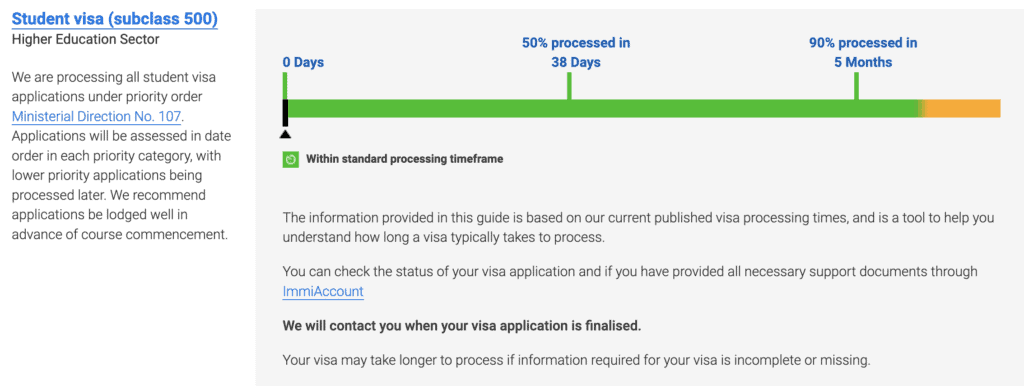Ministerial Direction 107 was a new government directive introduced by Australia on December 14 2023 that prioritised processing student and student guardian visa caseloads based on the assumed risk level of education providers and the student’s country of citizenship.
All visas continued to be processed but “low risk” applications were fast-tracked, which led to an outcry among many in the sector about first-class, second-class and even third-class assumptions.
The order, signed by Minister Clare O’Neil, stated: “There is no connection between the evidence framework and the quality of an education provider.”
But that was not how many stakeholders saw it.
The evidence levels (EL) were determined by five criteria, using a weighted average based on the total number of international students that had a confirmation of enrolment (CoE) from the education provider.
- Rate of Subsequent Protection Visa applications (10% weighting)
- Rate of visa cancellations (25% weighting)
- Rate of refusals due to a fraud reason (40% weighting)
- Rate of refusals (excluding fraud) (10% weighting)
- Rate of student visa holders becoming unlawful non-citizens (15% weighting)
EL1 providers saw the swiftest processing while EL2 (most other universities if not EL1) were deprioritised and EL3 providers were at the bottom of the pack for getting student visa grants decided.

There were some complaints that Chinese students had no visa issues and saw swift visa issuance for Group of Eight universities, leading to diversity problems in terms of acceptance rates in the country and at institutions.
Speaking at The PIE Live Asia Pacific in July, Pakistani agent Azeem Qasim led a 15-second silent protest and encouraged all delegates to stand and join him in doing the same.
According to Qasim, students from Pakistan were “topping the list” when it came to being impacted by visa refusals. “The cherry on the top is that [the government has] increased the visa fees to to AUD$1,600 without increasing the standards of how you manage the visa applications,” said Qasim.
Education minister, Jason Clare, speaking at this year’s AIEC, promised that the new ESOS Bill, which ushers in restrictive caps would at least shelve MD107.
“Not everyone is happy with [the new ESOS bill] but it is a heck of a lot better than Ministerial Direction 107,” he told delegates. “It’s time to pass the Bill and get rid of Ministerial Direction 107.”
Industry commentator Andrew Norton, however, has observed that repealing MD107 in the context of a cap might not rightside any inequities.
He explained that a Home Affairs bureaucrat told the international student caps Senate inquiry that repealing Direction 107 “would see us processing applications more in date order than in priority order”.
But with a backlog from the EL2 and EL3 institutions inevitable, the processing system may just move into a lower gear.
The government does offer a Visa Processing Times interactive guide. When The PIE News tried it, it indicated a typical wait for half of applicants of 38 days.

MD107 was ushered into effect shortly before increased English language requirements were introduced for student visa applicants in spring 2024.





